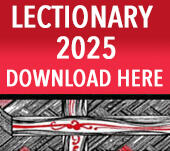Peter Atkins came to be Bishop of Waiapu after 15 years of service in the diocese, in parish ministry and as diocesan registrar under three bishops. These had been years of fast-moving change in both New Zealand society in general and within the church.
Peter Atkins was part of the wave of energy that Bishop Paul Reeves had brought to the diocese, as well as the grief and loss that surrounded Bishop Ralph Matthews' death.
Peter brought proven pastoral skills and administrative abilities to his new role. He already appreciated the challenges inherent in the regional diversity and difficult geography of Waiapu, as well as its rich bicultural journey. And above all, Peter brought energy, confidence and a strong mission focus to all he did.
In the diocese, his earlier involvement in Prayer Book revision, and as a theological tutor in the Solomons, meant that he modelled, and encouraged in others, worship, teaching and preaching that was lively and forward-looking.
He was pastorally out front and proactive as a result of the drastic economic changes in farming communities in the 1980s, as the Edgecumbe area reeled from damaging earthquakes in 1987 and as Cyclone Bola devastated the East Coast in 1988. This led to the formation of a Rural Ministry Unit as a forum for both church and community organisations, as well as government and farming groups setting up counselling services, which have continued as part of the rural scene.
In turn this led to a new assessment of Diocesan Social Services generally, to make it the distinctively parish-based service Waiapu Diocese became known for.
Peter Atkins also encouraged the diocese to break with the status quo and do more work on its anomalous boundaries and its internal geographical and social dislocation.
This was primarily to facilitate focused mission and ministry in its three basic regions. He saw the new regionalisation that emerged as a freeing up of the new bishops for hands on pastoral ministry and oversight. This had become urgent as more rural units found traditional stipendiary vicars difficult to maintain.
Peter Atkins' experience told him that coming bicultural changes in the Aotearoa New Zealand Anglican constitution would particularly affect Waiapu with its high proportion of Māori pastorates and clergy.
For Waiapu, Peter Atkins had the vision and skills, and was unafraid to lead changes demanded by the day and the place he was called to be in.

















Comments
Log in or create a user account to comment.